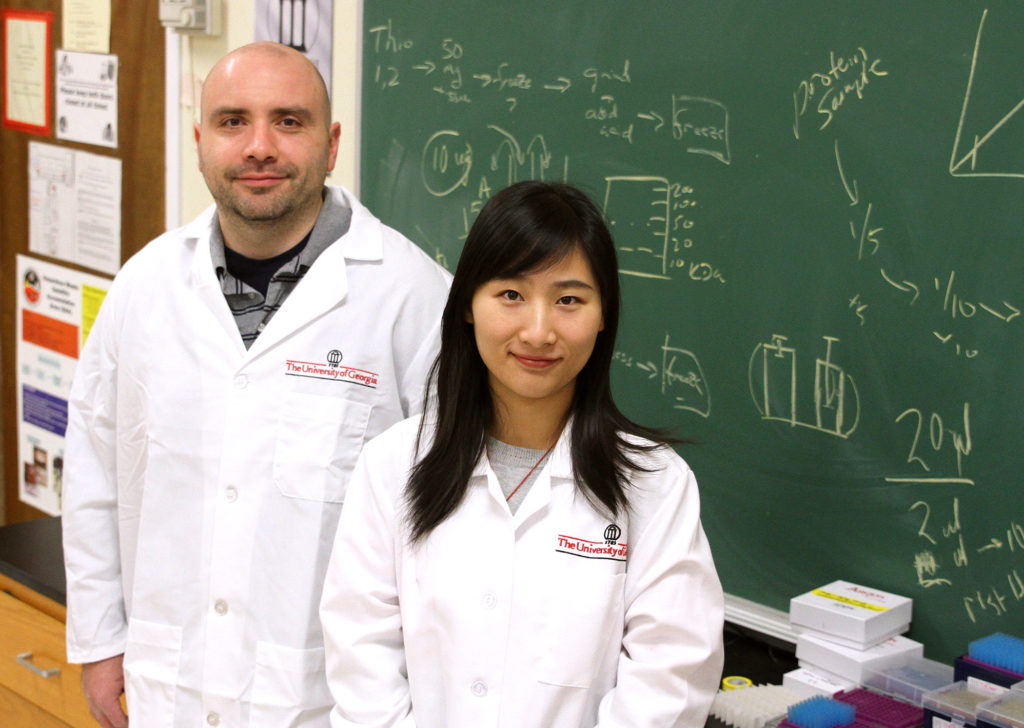UGA scientists have shown that a hormone instrumental in the aging process is under genetic control, introducing a new pathway by which genetics regulates aging and disease.
Previous studies have found that blood levels of this hormone, growth differentiation factor 11, decrease over time. Restoration of GDF11 reverses cardiovascular aging in old mice and leads to muscle and brain rejuvenation, a discovery that was listed as one of the top 10 breakthroughs in science in 2014.
Scientists in the UGA College of Family and Consumer Sciences now have discovered that levels of this hormone are determined by genetics, representing another potential mechanism by which aging is encoded in the genome.
Future studies will seek to reveal why GDF11 levels decrease later in life and whether they can be sustained to prevent disease.
“Finding that GDF11 levels are under genetic control is of significant interest,” said the study’s senior author Rob Pazdro, an assistant professor in the college’s foods and nutrition department. “Since it is under genetic control, we can find the genes responsible for GDF11 levels and its changes with age.”
The study confirmed results from previous experiments showing that GDF11 levels decrease over time and also showed that most of the depletion occurs by middle age.
In addition, the study examined the relationship between GDF11 levels and markers of aging such as lifespan in 22 genetically diverse inbred mice strains. Of note, the strains with the highest GDF11 levels tended to live the longest.
Using gene mapping, Pazdro’s team then identified seven candidate genes that may determine blood GDF11 concentrations at middle age, demonstrating for the first time that GDF11 levels are highly heritable.
“Essentially, we found a missing piece of the aging-genetics puzzle,” Pazdro said. “Very generally, we’ve made an important step toward learning about aging and why we age and what are the pathways that drive it. It’s the first step down a long road, but it’s an important step.”
The study was published in the Journals of Gerontology.
Study co-authors are Yang Zhou, Zixuan Jiang and Elizabeth Harris in the college’s foods and nutrition department and Jaxk Reeves and Xianyan Chen in the Franklin College of Arts and Sciences’ statistics department.
